Introduction
Welcome to Nairobi, Kenya's vibrant capital city, where modernity meets rich cultural heritage. This bustling metropolis offers a diverse range of experiences for tourists, whether you're visiting for a short stay or residing in a hotel in Nairobi. From wildlife encounters to vibrant markets, Nairobi has something to offer everyone. In this guide, we'll explore ten must-visit attractions and activities, along with information on how to reach Nairobi by bus, air, private car, and train, as well as details about major train stations and airports, airlines, and bus companies. Additionally, we'll cover food options, transport within the city, costs, safety, technology, and local tips to make the most of your time in Nairobi.
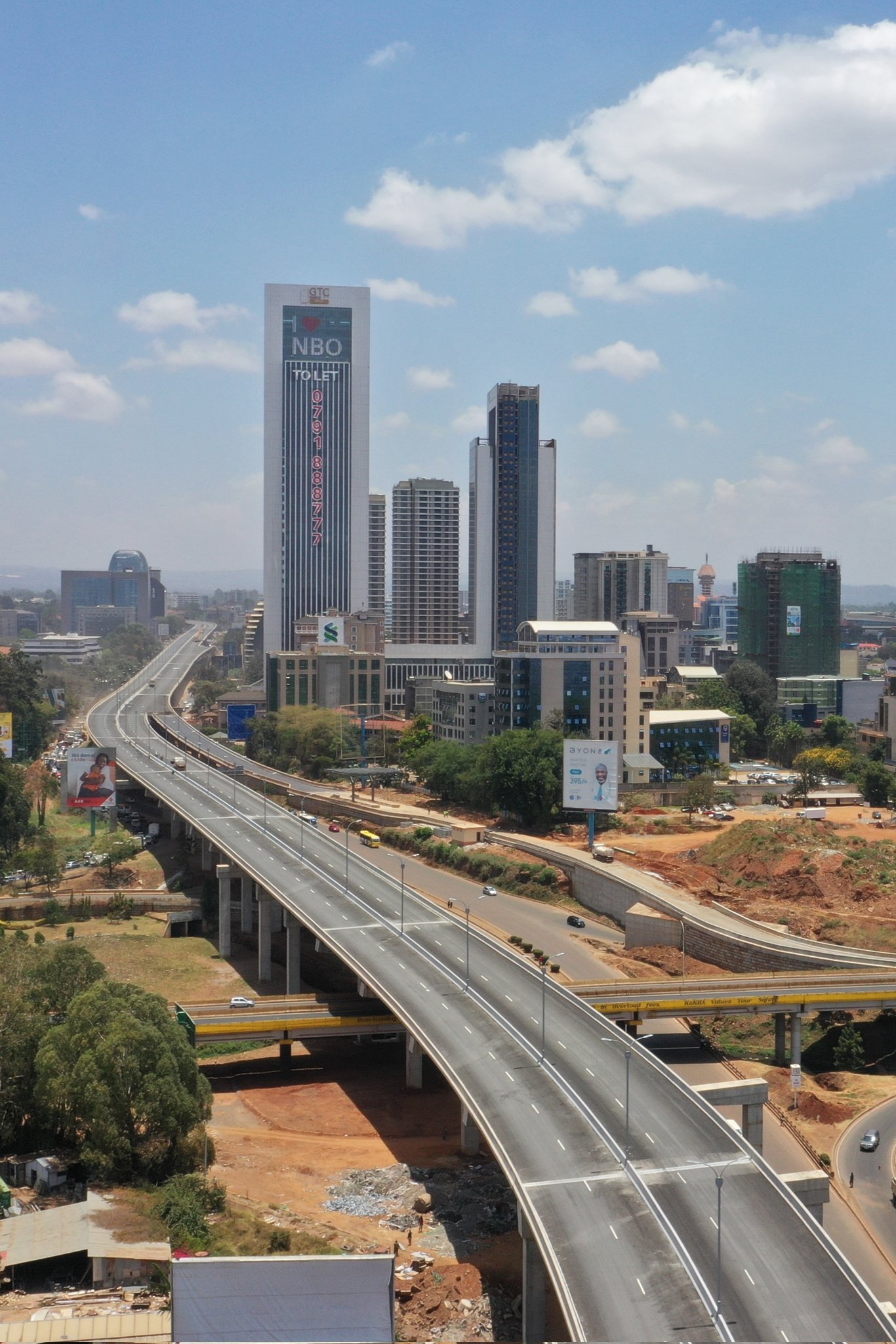
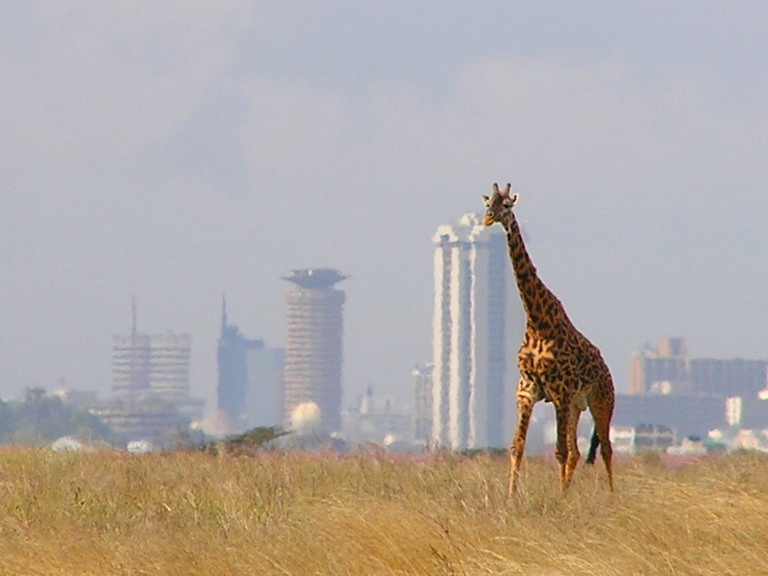
Reaching Nairobi
Before diving into the top 10 experiences, let's look at how you can reach Nairobi:
1. By Air:
Jomo Kenyatta International Airport (NBO) is Nairobi's primary international airport, located approximately 15 kilometers southeast of the city center. It serves as a major hub for international flights, connecting Nairobi to various cities around the world. Nairobi also has the smaller Wilson Airport. It has flights to many regional airports in Kenya while Nairobi's main airport, Jomo Kenyatta International Airport, serves domestic and many international destinations.
_at_Jomo_Kenyatta_International_Airport.jpg)
2. By Bus:
Nairobi is well-connected to neighboring countries and regions through an extensive network of bus services. Multiple bus companies operate routes to Nairobi, including Easy Coach, Modern Coast, and Akamba, offering comfortable and affordable travel options.
3. By Private Car:
If you prefer driving, Nairobi is accessible by well-maintained highways from major cities within Kenya and neighboring countries. Keep in mind the necessary documentation and road conditions before embarking on a road trip.
4. By Train:
Nairobi boasts a train service that connects it to other Kenyan cities. The Nairobi Railway Station, situated in the city center, is the primary train station serving Nairobi. There's also the Nairobi Terminus, a railway station on the Mombasa–Nairobi Standard Gauge Railway (SGR) located in Syokimau, just south of Nairobi, the capital of Kenya. This connects Nairobi from other cities and towns along the Nairobi - Mombasa Standard Gauge Railway (SGR) Railway line.
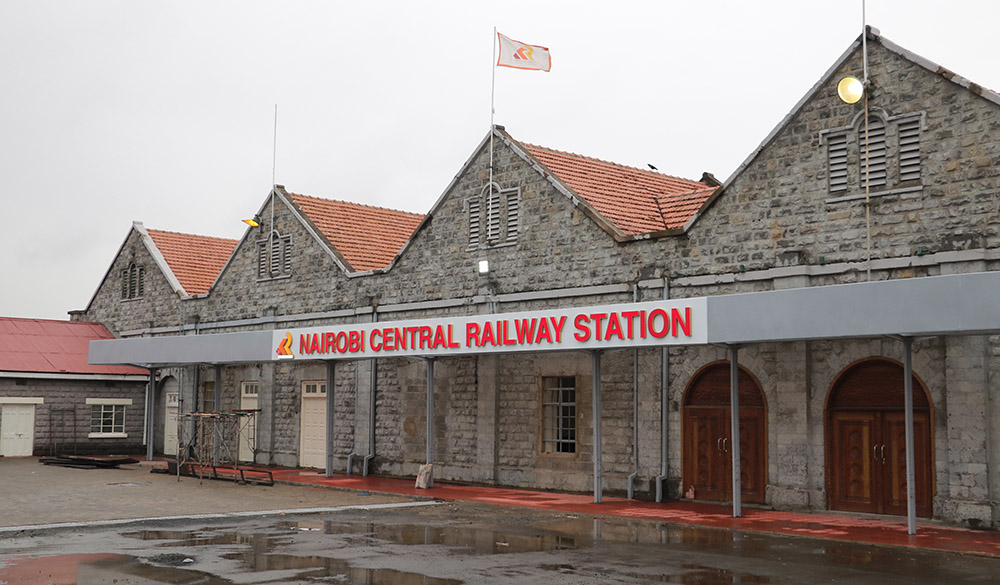
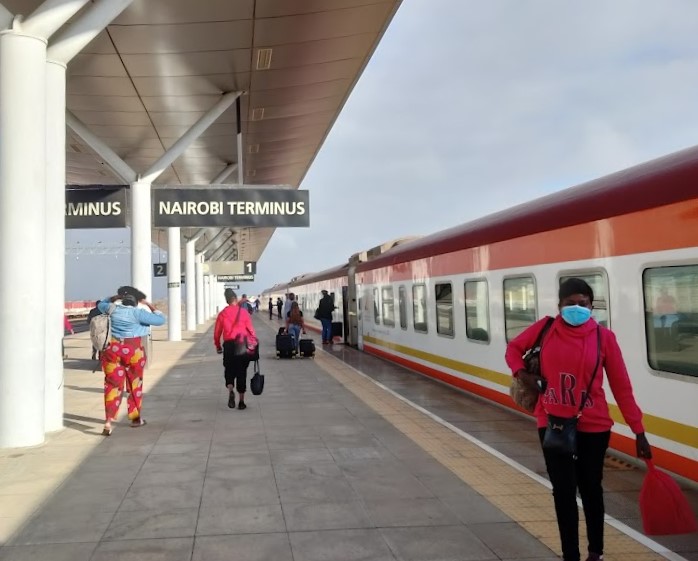
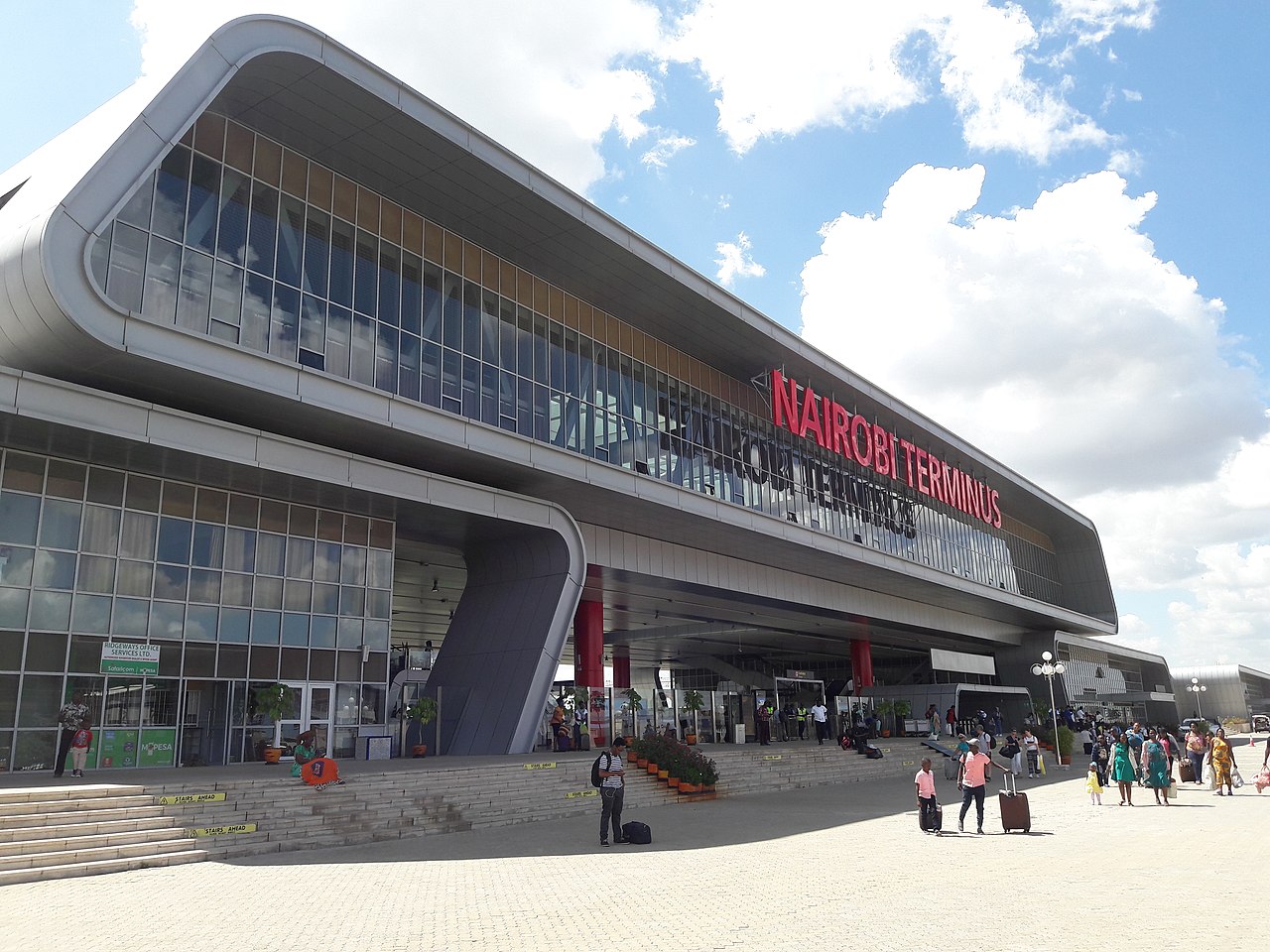
Top 10 Experiences in Nairobi
Now, let's delve into the ten unforgettable experiences Nairobi has to offer:
1. Nairobi National Park
Experience the unique blend of urban and wildlife at Nairobi National Park, located just a stone's throw away from the city center. This incredible park is home to a variety of wildlife, including lions, giraffes, rhinos, and zebras, set against the backdrop of Nairobi's skyline. Safari game drives offer excellent opportunities for wildlife spotting, making this a thrilling adventure right on the city's doorstep.
Nairobi National Park - A Unique Urban Oasis
Nairobi National Park is one of the most unique national parks in the world. It is located just 7 kilometers (4.3 miles) south of Nairobi, the capital city of Kenya. This makes it one of the few national parks in the world that is located within a major urban area.
The park was established in 1946, and it covers an area of 117 square kilometers (45 square miles). The park is home to a variety of wildlife, including lions, elephants, giraffes, zebras, and antelopes. It is also home to a number of bird species, including eagles, hawks, and flamingos.
The park is a popular tourist destination, and it is estimated that over 120,000 people visit the park each year. The park is also an important research and conservation area, and it is home to a number of breeding programs for endangered species.
History of Nairobi National Park
The area that is now Nairobi National Park was originally inhabited by the Maasai people. The Maasai were a nomadic people who herded cattle, and they used the area as a grazing ground. In the late 19th century, the British colonial government established a settlement in the area, and they named it Nairobi.
As the settlement grew, it began to encroach on the Maasai's grazing lands. The Maasai were forced to move to other areas, and the land that they had been using was turned into a game reserve. In 1946, the game reserve was upgraded to a national park.
Flora and Fauna of Nairobi National Park
Nairobi National Park is home to a variety of wildlife, including:
Mammals: Lions, elephants, giraffes, zebras, antelopes, buffaloes, hippopotamuses, rhinoceroses, lions, leopards, cheetahs, hyenas, and many more.
Birds: Eagles, hawks, flamingos, pelicans, storks, and many more.
Plants: Acacia trees, baobab trees, grassland, and shrubs.
Entry Fees
The entry fees for Nairobi National Park are as follows:
The entry fee for Nairobi National Park varies depending on the nationality of the visitor.
- Kenyans: KES 500
-
- East Africans: KES 1000
-
- Entry fees for Nairobi National Park are around $40 for non-resident adults and $20 for children.
Visitors
In 2021, there were over 100,000 visitors to Nairobi National Park. The majority of the visitors were Kenyans, followed by tourists from other African countries and tourists from non-African countries.
The top five African countries that sent visitors to Nairobi National Park in 2021 were:
- Tanzania
-
- Uganda
-
- South Africa
-
- Ethiopia
-
- Rwanda
-
The top five non-African countries that sent visitors to Nairobi National Park in 2021 were:
- United Kingdom
-
- United States
-
- Germany
-
- France
-
- China
Amenities
Nairobi National Park has a number of amenities for visitors, including:
- A visitor center with exhibits on the park's wildlife and history
-
- Game drives: Game drives are the most popular way to see the wildlife in the park. Game drives can be taken in a vehicle or on foot.
-
- A number of guided safaris, which allow visitors to see the wildlife in the park.
-
- A number of walking trails
-
- A safari lodge
-
- Restaurants: There are a number of restaurants in the park that serve a variety of food, including Kenyan cuisine.
-
- Gift shops: A number of souvenir shops, which sell a variety of items, such as clothing, jewelry, and souvenirs.
-
-
- Picnic areas: There are number of picnic areas, which are perfect for a relaxing day in the park
-
Getting There:
Nairobi National Park is easily accessible from Nairobi city. The park is located just 7 kilometers south of the city center. There are a number of ways to get to the park, including:
- By car: There is a road that runs through the park, and it is possible to drive to the park from Nairobi city.
-
- By bus: There are a number of buses that run from Nairobi city to the park.
-
- By taxi: There are a number of taxis that can take you to the park from Nairobi city.
-
Duration: Game drives typically last 3-4 hours, but you can spend a full day exploring the park.
Safety: Nairobi National Park is generally considered to be a safe place to visit. The park is well-managed, and game drives are conducted under the guidance of experienced guides, making it a safe experience. It is also important to be respectful of the park's wildlife and to avoid feeding or approaching the animals.
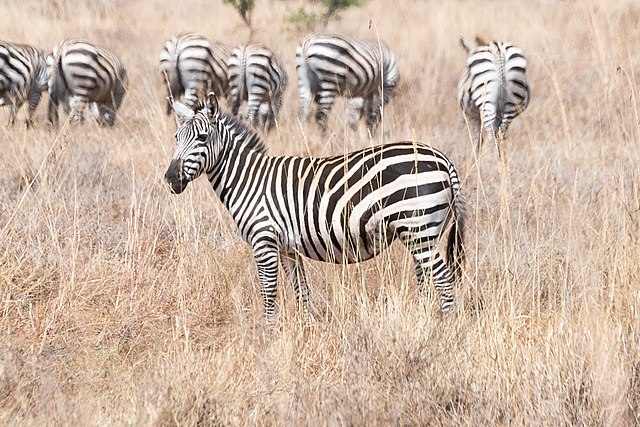
2. David Sheldrick Wildlife Trust
For a heartwarming experience, visit the David Sheldrick Wildlife Trust, a sanctuary dedicated to orphaned elephants and rhinos. Here, you can witness baby elephants being fed and playing in the mud. The trust's conservation efforts are commendable, and your visit directly contributes to their cause.
Getting There: The trust is located near Nairobi National Park and is easily reachable by taxi or organized tours.
Duration: The public visiting hours are limited to one hour in the morning, so plan accordingly.
Cost: The entrance fee is approximately $7 for non-resident adults and $3.50 for children.
Safety: The trust ensures safety protocols for both visitors and the animals.
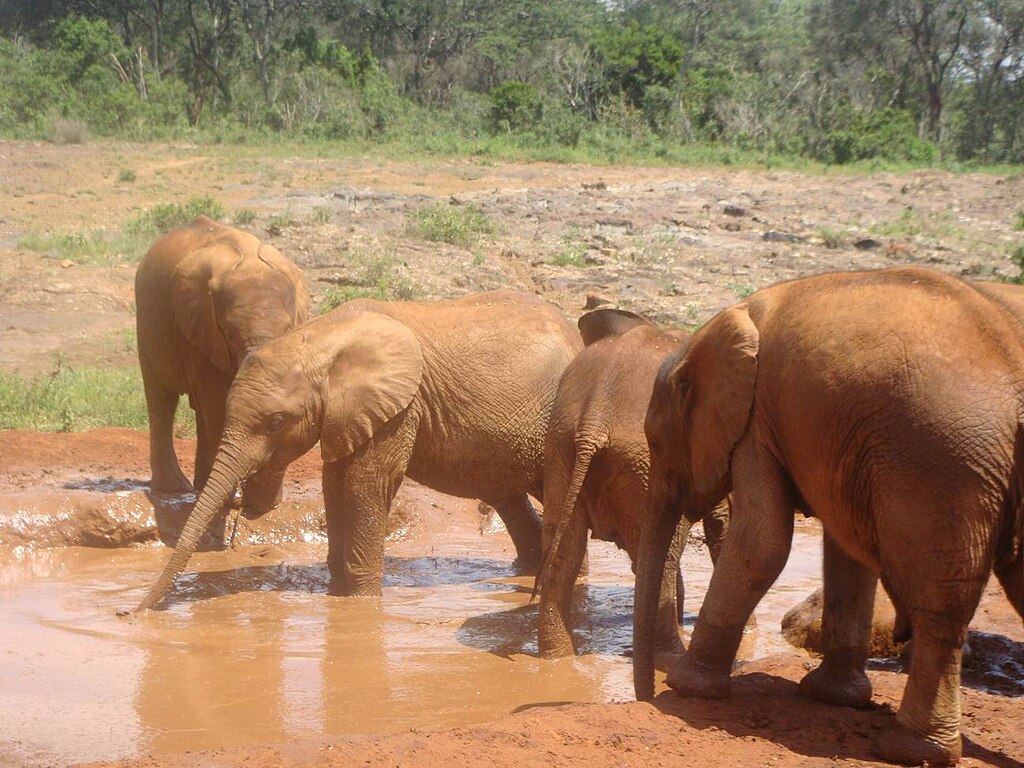
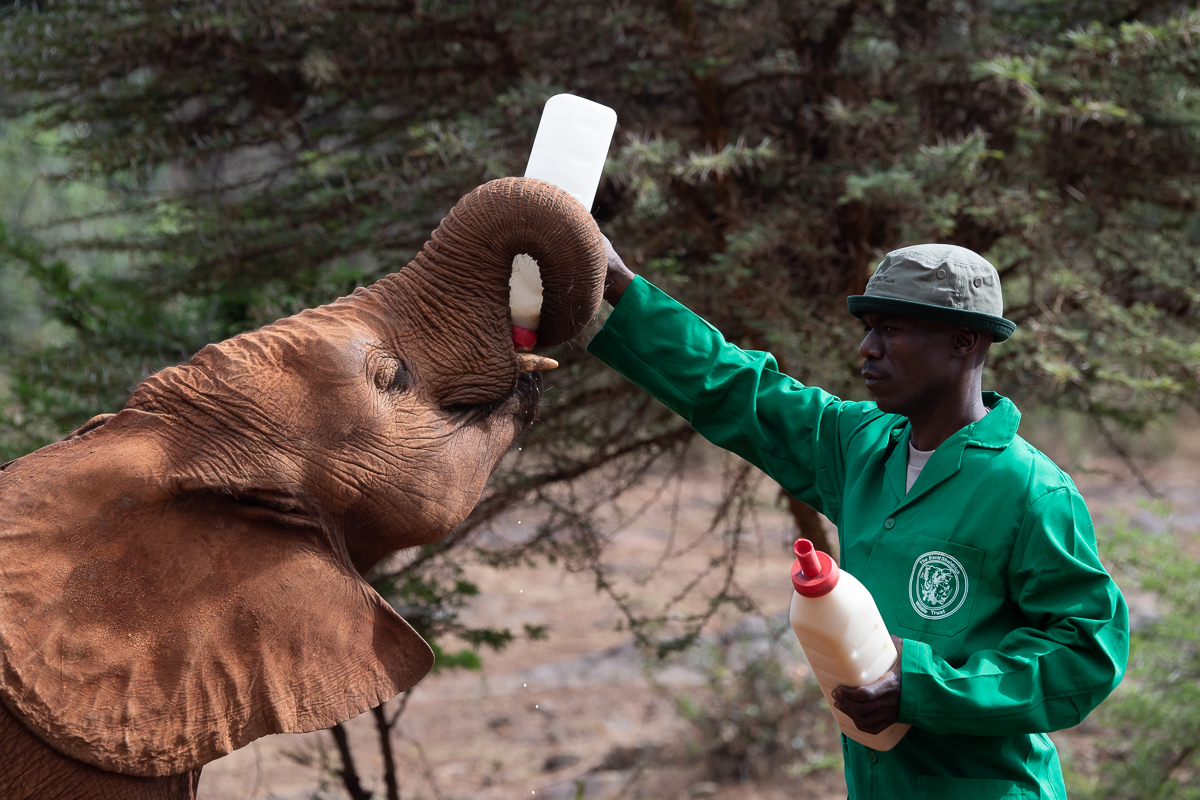
3. Giraffe Centre
The Giraffe Centre is located on Nyumbi Road, off Duma Road in Nairobi’s Lang’ata suburb approximately 15 kilometres from Nairobi city centre. It is a very popular tourist attraction in Nairobi. Here you can have an up-close encounter with the endangered Rothschild giraffes at the Giraffe Centre. You can feed these gentle giants from a raised platform and learn about conservation efforts to protect their species. if you are lucky, you can even get to even kiss one.
After spending some time with the giraffes, you can go for a stroll through the 1.5km nature trail. The nature trail is available to guests at no extra cost. You might see warthogs, antelopes, and a variety of bird species on the trail.
Giraffe center has a gift shop called Daisy Zoovenir Shop if you want to pick up some souvenirs. You can also sit down, relax and enjoy some tea at the tea house. All proceeds from the sales at the gift shop and tea house go towards conservation efforts.
Getting There: The Giraffe Centre is situated in Karen, about 30 minutes from the city center. Taxis or organized tours are the most convenient options.
Giraffe Centre Opening Hours: The Giraffe Centre opens daily from 9 am to 5 pm. This includes weekends and Public Holidays.
Duration: Plan for 1-2 hours to enjoy the feeding experience and explore the center.
Cost: The entry fee is approximately $15 for non-resident adults and $7 for children.
Safety: Trained staff supervise the interactions to ensure safety.
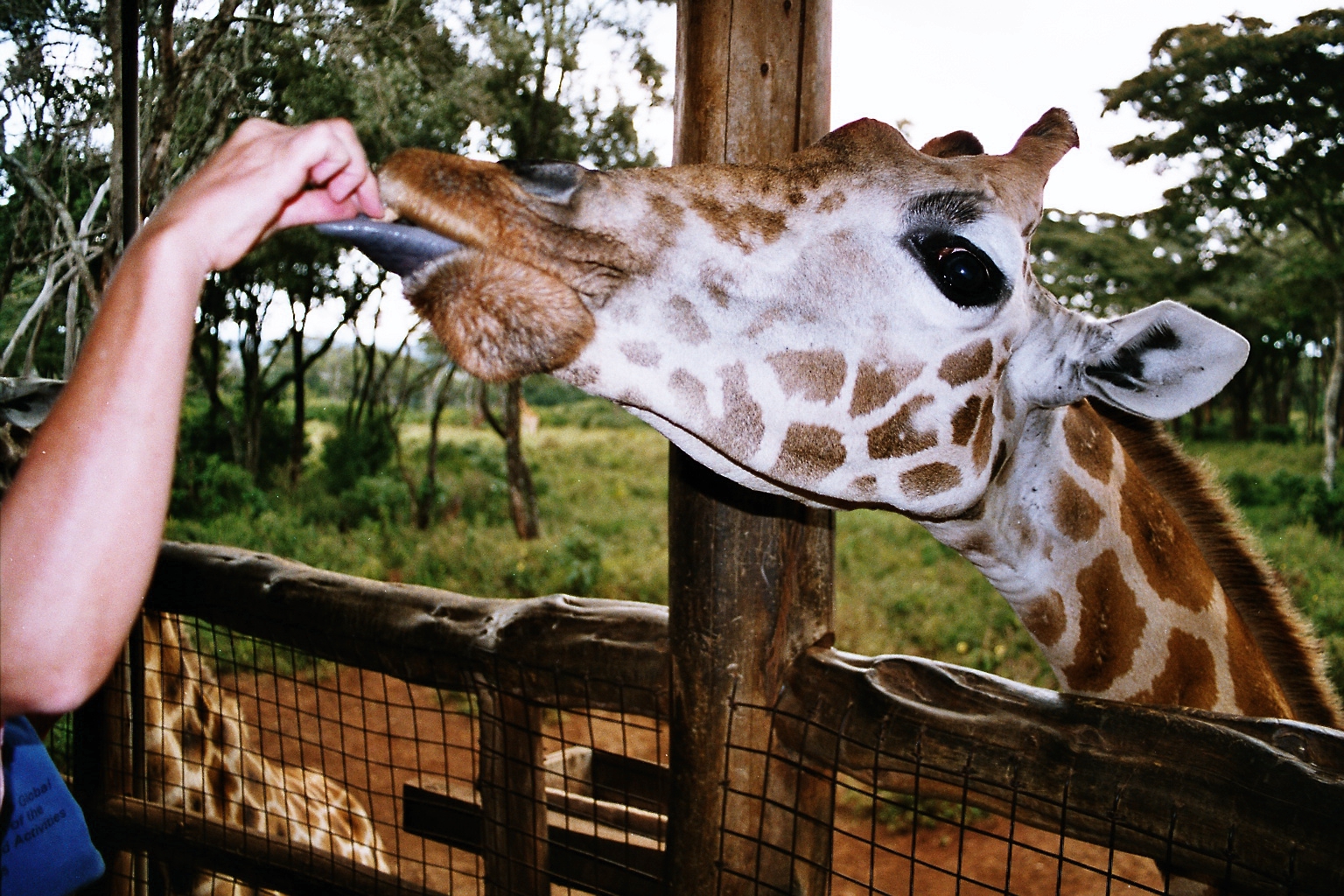
Best Time To Visit Giraffe Centre Kenya
The best time to visit Giraffe Centre is to try to visit during non-peak hours, that’s between 9 am and 12 midday, then between 3 pm and 5 pm.
Giraffe Centre Entrance Fees
| Citizen/Resident |
Charges |
| Adult |
Ksh 400 |
| Children |
Ksh 200 |
| Non-Resident |
Charges |
| Adult |
Ksh 1500 |
| Children |
Ksh 750 |
4. Kazuri Beads Women's Cooperative
Support the local community by visiting the Kazuri Beads Women's Cooperative, where skilled artisans create beautiful handmade ceramic beads and pottery. Take a tour to witness the artistic process and purchase unique souvenirs.
Getting There: Kazuri Beads is located in Karen and can be reached by taxi or private car.
Duration: Plan for 1-2 hours to explore the workshop and shop for souvenirs.
Cost: Entrance is free, and prices for souvenirs vary depending on the items.
Safety: The cooperative is a safe and welcoming place for visitors.
5. Maasai Market
Immerse yourself in Nairobi's vibrant culture at the Maasai Market, where local artisans display their colorful crafts, fabrics, jewelry, and more. Bargaining is encouraged, so hone your negotiation skills to get the best deals.
Getting There: The Maasai Market rotates between different locations, but the Village Market and Galleria Mall host regular markets on specific days. Taxi or rideshare services are the best transport options.
Duration: Spend a couple of hours exploring the market and shopping for unique souvenirs.
Cost: Entrance is free, and prices for products can vary depending on your bargaining skills.
Safety: It's generally safe, but be mindful of your belongings in crowded areas.
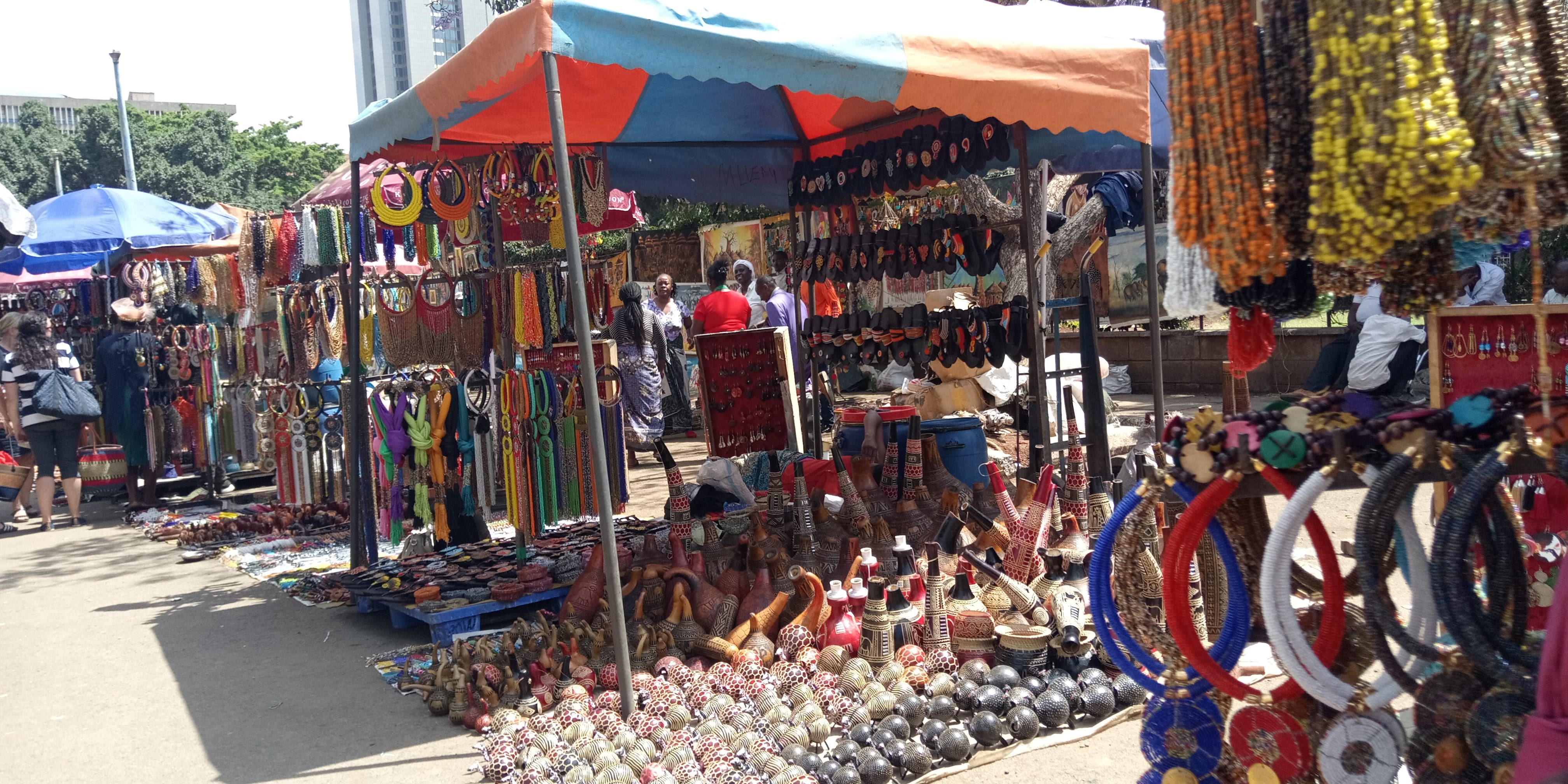
6. Nairobi National Museum
Delve into Kenya's rich history and diverse culture at the Nairobi National Museum. The museum features exhibits on paleontology, art, ethnography, and more, providing valuable insights into the country's past and present.
Getting There: The museum is in the Museum Hill area, and taxis are the most convenient mode of transport.
Duration: Allocate at least 2-3 hours to explore the exhibits thoroughly.
Cost: The entry fee is approximately $12 for non-resident adults and $6 for children.
Safety: The museum maintains security measures for visitors.
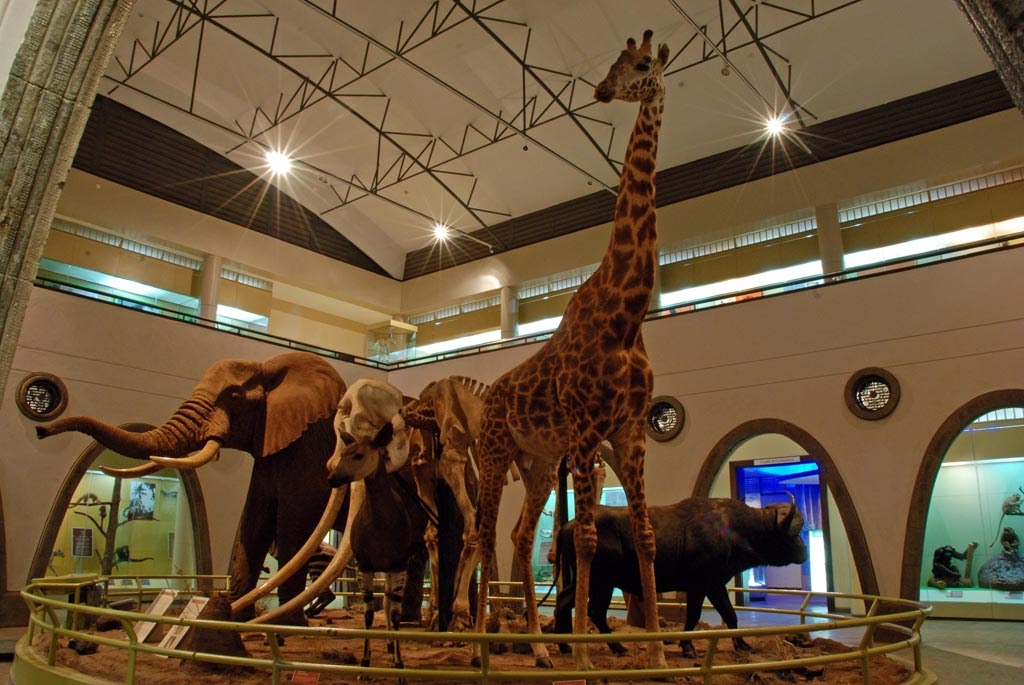
7. Karura Forest
Escape the city's hustle and bustle and find tranquility in Karura Forest, an urban oasis covering over 1,000 hectares. Enjoy walking, jogging, or cycling along the well-marked trails, and visit waterfalls and caves hidden within the forest.
Getting There: Karura Forest is easily accessible by taxi or rideshare services.
Duration: Plan a few hours or a half-day to fully appreciate the forest's beauty.
Cost: The entrance is free, but bicycle rentals and guided tours may have additional costs.
Safety: The forest is generally safe, but it's advisable to stick to the marked trails.

8. Nairobi Railway Museum
Discover Kenya's railway heritage at the Nairobi Railway Museum, where you'll find a collection of historic steam locomotives and vintage carriages. This museum is a treat for railway enthusiasts and history lovers alike.
Getting There: The museum is located close to the Nairobi Railway Station and can be reached by taxi or private car.
Duration: Plan for 1-2 hours to explore the exhibits thoroughly.
Cost: The entry fee is around $7 for non-resident adults and $3.50 for children.
Safety: The museum maintains safety standards for visitors.
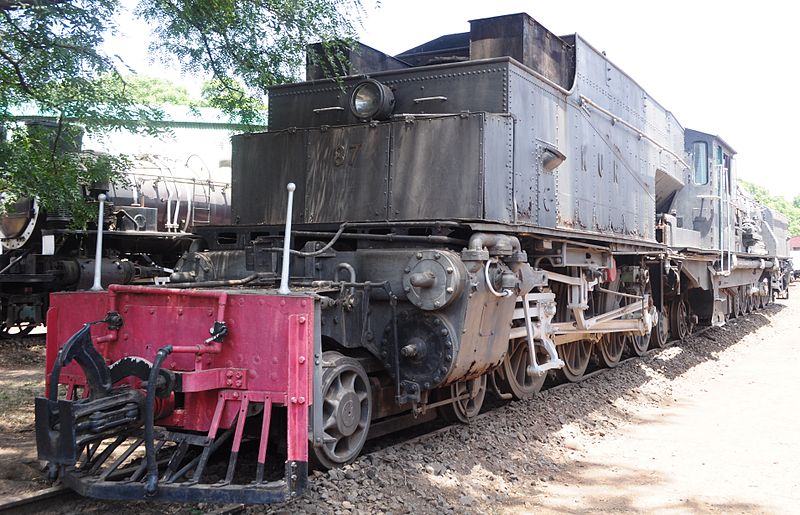
9. Nairobi City Market
Experience the vibrant atmosphere of Nairobi City Market, where you can shop for fresh produce, crafts, clothing, and souvenirs. The market offers an authentic taste of Nairobi's daily life.
Getting There: The market is situated in the city center and can be reached by taxi or public transport.
Duration: Spend a couple of hours exploring the market and shopping for local goods.
Cost: Entrance is free, but prices for products can vary.
Safety: Exercise caution with your belongings in crowded areas.
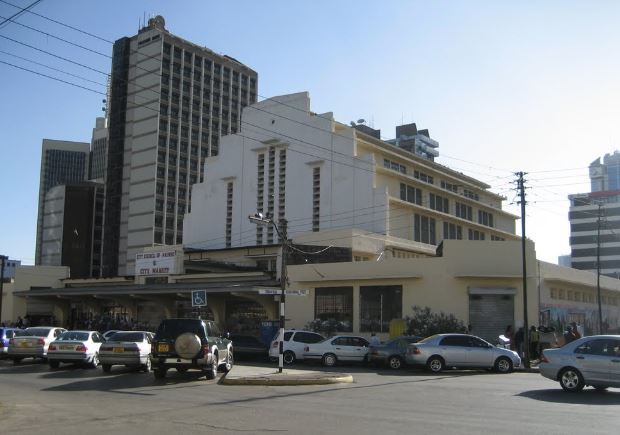
10. Nairobi Gallery
For art enthusiasts, the Nairobi Gallery is a must-visit, housing an impressive collection of contemporary and traditional Kenyan art. The gallery itself is a historic building, offering a unique setting to appreciate local creativity.
Getting There: The Nairobi Gallery is located in the city center and is easily accessible by taxi or public transport.
Duration: Allocate 1-2 hours to appreciate the artwork.
Cost: The entry fee is approximately $3 for non-resident adults and $1.50 for children.
Safety: The gallery maintains safety standards for visitors.
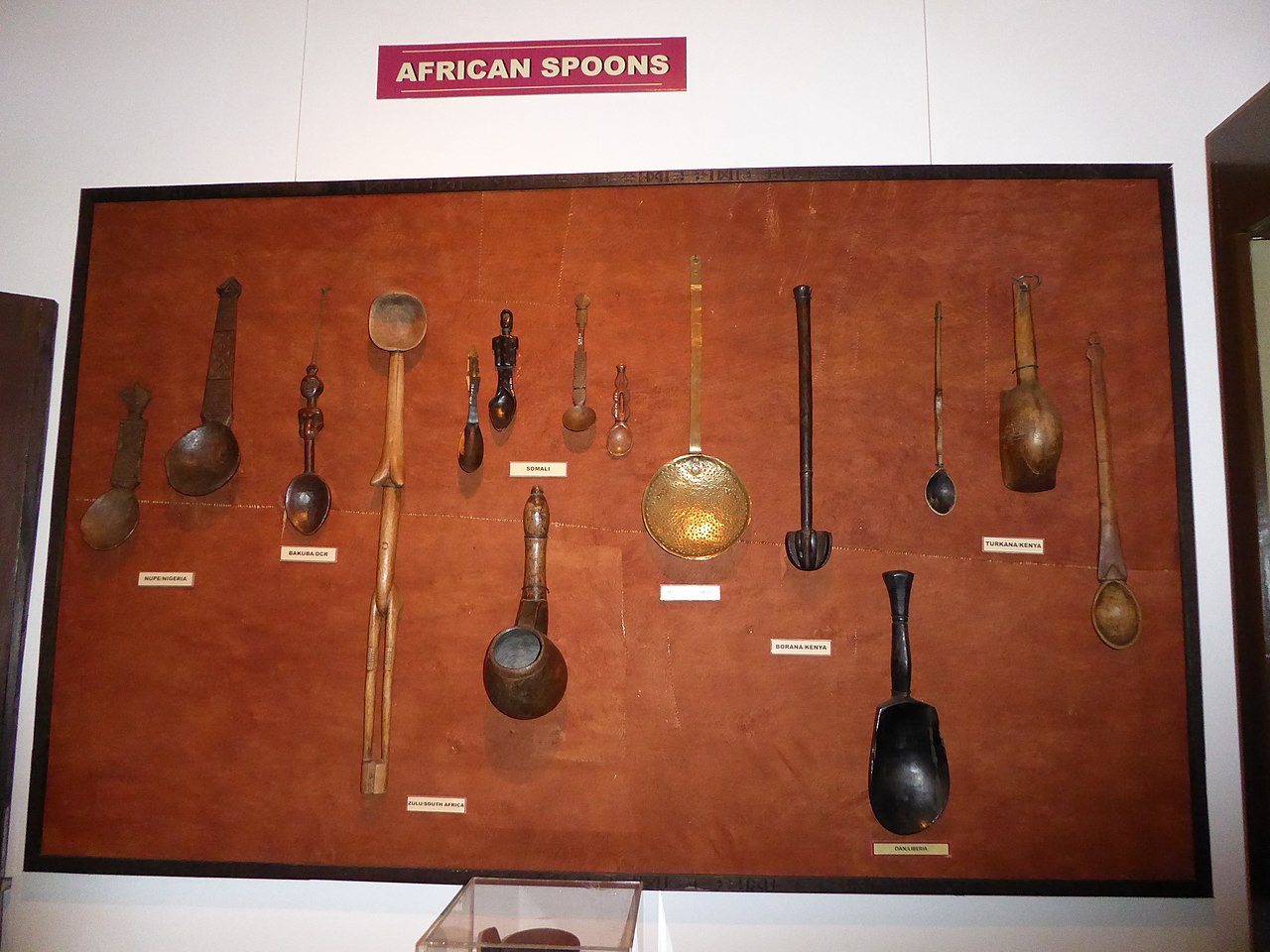
Food and Restaurant Options
Nairobi offers a diverse range of dining options, from traditional Kenyan dishes to international cuisines. Some local foods you must try include:
Nyama Choma: Grilled meat, usually goat or beef, served with side dishes like ugali (maize meal) and kachumbari (tomato and onion salad).
Sukuma Wiki: A tasty vegetable dish made from collard greens, often served with meat or fish.
Chapati: A soft, unleavened flatbread, commonly enjoyed with various accompaniments.
Mandazi: Sweet fried dough snacks, perfect for a quick treat.
Ugali: A staple maize porridge that complements many Kenyan dishes.
Transport within the City
In recent years, Nairobi has seen significant developments in its highway system, including the construction of the Nairobi Expressway. In this article, we will explore Nairobi's major highways and the transformative impact they have on easing transport within the city, focusing on the Nairobi Expressway and its key exits.
Thika Road (A2)
Thika Road, also known as A2, is one of Nairobi's most crucial highways. It connects Nairobi to the town of Thika, which lies to the northeast. This six-lane superhighway significantly eases transport for commuters, as it is a major route for those traveling to and from the city's outskirts. The road is well-maintained and equipped with street lights, making it accessible day and night.
Key Exits: Notable exits along Thika Road include Roysambu, Kasarani, Allsops, and Juja Road, each serving various residential areas and commercial centers. The highway also connects to the Nairobi-Nakuru highway, facilitating seamless travel between these two cities.
Travel Time: Under normal traffic conditions, it takes approximately 30-45 minutes to travel from Nairobi's city center to Thika using this highway.
Mombasa Road (A104)
Mombasa Road, labeled A104, is a vital artery linking Nairobi to the coastal city of Mombasa. It is a major transportation corridor for goods and passengers heading to and from the Port of Mombasa, one of East Africa's busiest ports. This highway plays a significant role in promoting trade and economic activities.
Key Exits: Mombasa Road provides access to areas such as South C, South B, and Industrial Area, which are prominent residential and industrial zones in Nairobi. It also connects to Jomo Kenyatta International Airport, ensuring swift transportation for air travelers.
Travel Time: The journey from Nairobi's city center to Jomo Kenyatta International Airport via Mombasa Road typically takes around 20-30 minutes, depending on traffic conditions.
Waiyaki Way (A104)
Waiyaki Way, part of the A104 route, is a crucial thoroughfare connecting Nairobi's central business district to the western parts of the city. This road has undergone significant improvements over the years, including expansion and better road markings.
Key Exits: Waiyaki Way serves as an access point to several essential areas, including Westlands, Parklands, and Loresho, which are home to numerous offices, schools, and residential neighborhoods.
Travel Time: During non-peak hours, it usually takes around 15-25 minutes to travel from the city center to Westlands using Waiyaki Way.
Nairobi Expressway
The Nairobi Expressway is a transformative project that has captured the city's attention since its inception. This mega-infrastructure initiative aims to alleviate traffic congestion and enhance connectivity between Mlolongo (near Jomo Kenyatta International Airport) and the Westlands area. It is an elevated expressway, minimizing the disruptions caused by frequent intersections on conventional roads.
Key Exits: The Nairobi Expressway features strategically located interchanges, including the Southern Interchange near the Nyayo Stadium, and the Northern Interchange near the Westlands area. These exits enable quick access to major neighborhoods, thus streamlining traffic flow.
Travel Time: Once completed, the Nairobi Expressway is projected to significantly reduce travel time from Mlolongo to Westlands, cutting it down to approximately 20-30 minutes, even during peak hours.
The development of Nairobi's major highways, coupled with the ambitious Nairobi Expressway project, has been instrumental in easing transport within the city. These well-maintained and strategically planned road networks not only facilitate swift commuting but also foster economic growth by providing efficient access to key commercial and industrial centers. As the city continues to grow and evolve, further investments in transportation infrastructure will be essential to keep Nairobi's bustling spirit alive while ensuring a smooth and seamless travel experience for its residents and visitors alike.
Nairobi offers a variety of transport options for getting around the city, including:
Matatus: These minibusses are the most common and affordable mode of public transport in Nairobi. However, they can be crowded and may not follow strict schedules.
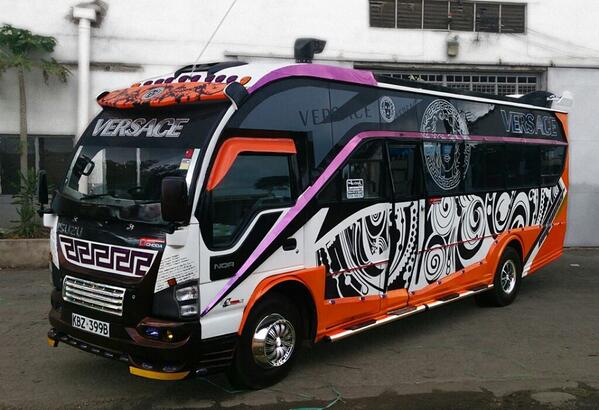
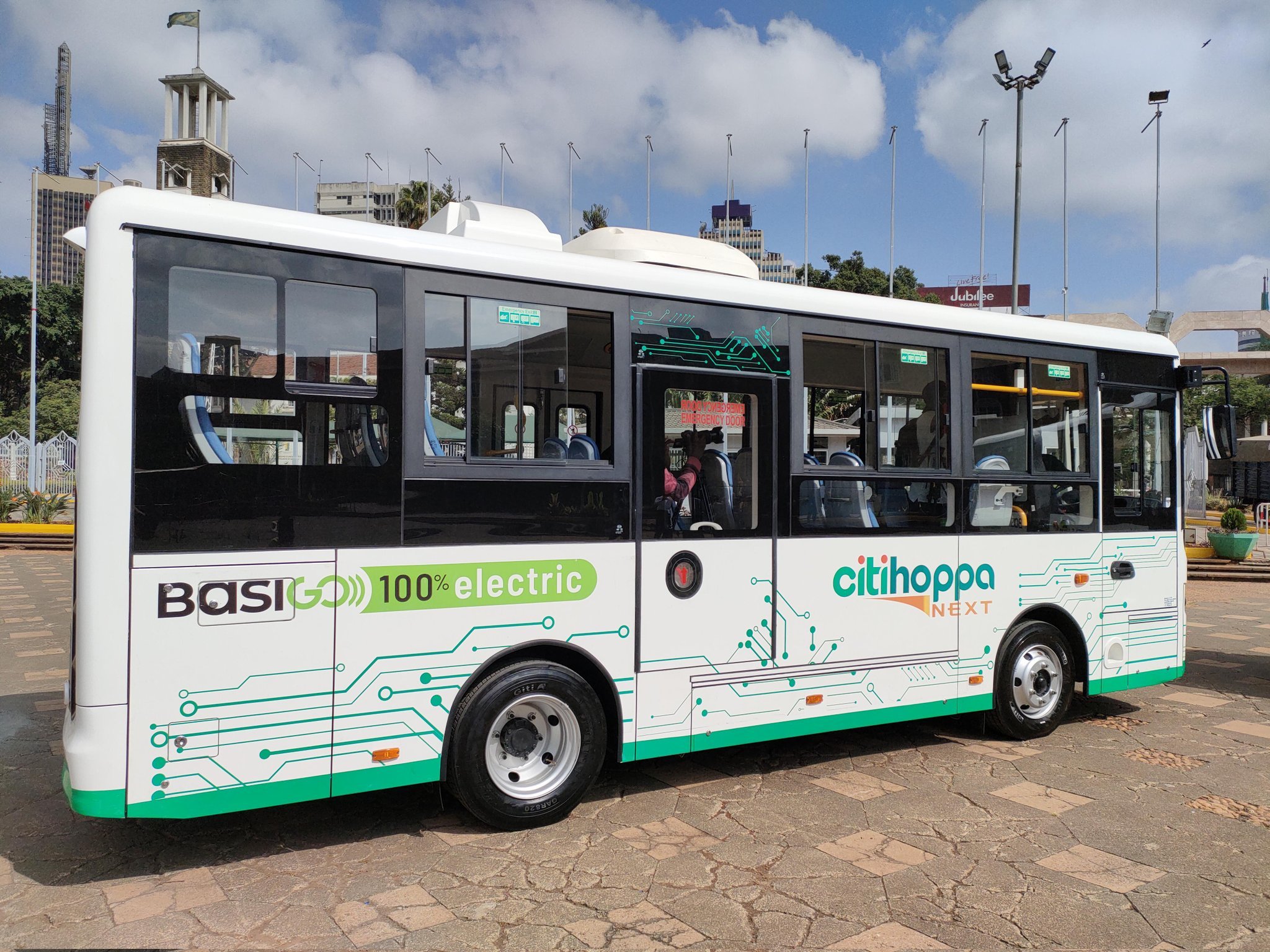
BasiGo, the Kenyan electric mobility startup has been working to revolutionize the public transportation sector by providing public transport bus owners with cost-effective electric alternatives to diesel buses.
Boda-Bodas: Motorcycle taxis are a quick way to navigate through traffic, but safety precautions should be taken.
Taxis: Taxis are widely available and can be hailed from the street or booked through ride-hailing apps.
Cost of Activities and Transport
The cost of activities in Nairobi can vary depending on your preferences and bargaining skills. Here's an approximate cost breakdown:
Nairobi National Park Game Drive: $40 (entrance fee) + $60 (game drive)
David Sheldrick Wildlife Trust: $7 (entrance fee)
Giraffe Centre: $15 (entrance fee)
Kazuri Beads Women's Cooperative: Free entry, souvenir prices vary
Maasai Market: Free entry, product prices vary
Nairobi National Museum: $12 (entrance fee)
Karura Forest: Free entry, bicycle rentals may cost $10-$15
Nairobi Railway Museum: $7 (entrance fee)
Nairobi City Market: Free entry, product prices vary
Nairobi Gallery: $3 (entrance fee)
Transport costs within the city:
Matatus: Approximately $0.50 per short ride
Boda-Bodas: Around $2-$5 for short trips
Taxis: Prices vary but expect to pay around $10-$20 for short rides within the city.
Safety
Nairobi, like any major city, requires travelers to exercise caution. Keep your belongings secure, avoid poorly lit areas at night, and take recommended transport options for your safety.
Technological Development and Mobile Money
Nairobi is at the forefront of technological advancements in Africa. Mobile money services like M-Pesa are widely used for transactions, making payments and transfers convenient and secure.
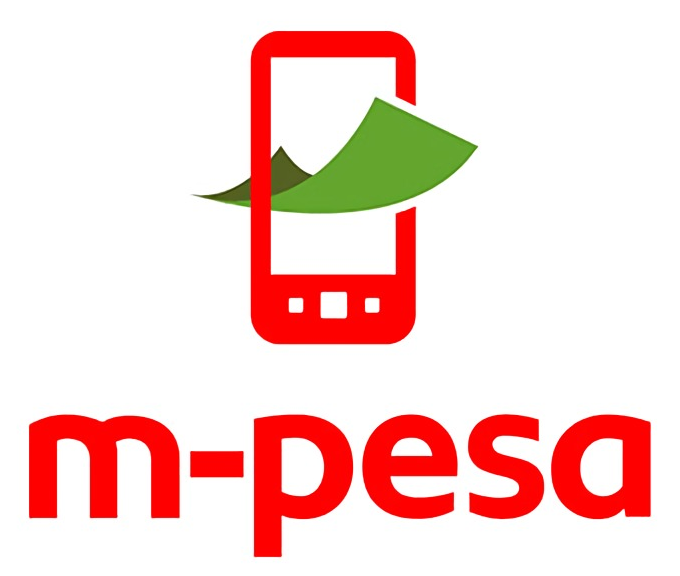
M-Pesa has revolutionized the way Kenyans pay for goods and services. M-Pesa has enabled cashless travel across Kenya. Various goods and services can be paid for using this platform, its adoption is widespread, and it has regular usage among across all age groups.
The Rise of M-Pesa
M-Pesa, short for "Mobile Money," was launched in Kenya in 2007, and since then, it has grown into one of the world's most successful mobile payment systems. The platform allows users to deposit, withdraw, transfer money, and make payments through their mobile phones. It leverages Kenya's extensive mobile network and has overcome many of the barriers associated with traditional banking, especially for those living in remote areas with limited access to banking services.
Goods and Services Payable with M-Pesa
The versatility of M-Pesa makes it an invaluable tool for cashless travel throughout Kenya. A wide range of goods and services can be conveniently paid for using the platform, including but not limited to:
Transportation: Whether you're traveling by matatu (minibus), bus, or even motorcycle taxi (boda-boda), most operators in urban and rural areas accept M-Pesa payments. It has made commuting easier and safer, as passengers no longer need to carry large sums of cash.
Accommodation: Many hotels, guesthouses, and lodges now accept M-Pesa payments, making it convenient for travelers to book and pay for their stays without using cash.
Food and Dining: From street vendors to upscale restaurants, M-Pesa is widely accepted as a form of payment. Travelers can enjoy delicious local cuisine without worrying about cash availability.
Tourist Attractions: Entrance fees to national parks, wildlife reserves, museums, and other tourist attractions can often be paid through M-Pesa.
Shopping: Numerous supermarkets, stores, and markets across Kenya embrace M-Pesa, enabling visitors to shop for souvenirs and essentials without cash.
Frequency of M-Pesa Services Countrywide
M-Pesa's services are available throughout Kenya, from bustling cities to remote villages. Its widespread network of agents and authorized dealers has made it accessible even in the most rural areas. The convenience of sending and receiving money, paying for goods, and accessing financial services through M-Pesa has led to a significant uptake among the Kenyan population.
Adoption Percentage and Regular Usage among All Age Groups
M-Pesa's adoption in Kenya has been nothing short of remarkable. By 2021, approximately 80% of Kenya's adult population was actively using M-Pesa, which demonstrates its widespread acceptance and popularity. What initially started as a service used by urban residents for remittances has now penetrated every stratum of society, reaching people from all walks of life.
All age groups have embraced M-Pesa, with the younger generation, in particular, exhibiting a high level of enthusiasm for the platform. This is partly due to the ease of use and the fact that mobile technology is an integral part of their lives. However, even older generations have recognized the benefits of this mobile payment system, as it offers security and convenience while reducing the risks associated with carrying cash.
M-Pesa has transformed the way Kenyans travel and conduct financial transactions. Its ability to facilitate cashless payments for goods and services across the country has not only made life easier for residents but also for tourists exploring this diverse and beautiful nation.
Internet Connectivity
Fast and affordable internet is easily accessible in Nairobi, with Wi-Fi hotspots available in hotels, restaurants, and public spaces.
Tech-Savvy Locals
Nairobi's residents are generally tech-savvy, embracing mobile technologies and social media.
Conclusion
Nairobi is a vibrant city that offers a mix of modernity and African charm. From close encounters with wildlife to exploring cultural treasures, Nairobi provides a range of exciting experiences for every traveler. With easy access by air, bus, private car, or train, and affordable transport options within the city, Nairobi is an accessible destination. With its delicious local cuisine, bustling markets, and friendly locals, Nairobi is undoubtedly a must-visit destination for any traveler seeking a memorable African adventure.